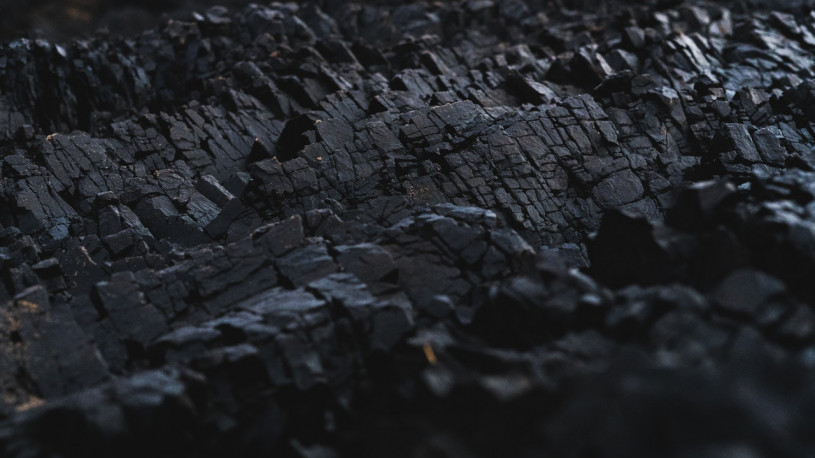-
Do Citrus Fruits make the Best Thermoplastic Polymers?
 Continue Reading
Continue ReadingThe world needs industrial polymers. However, as any fuel knows (pun intended), most polymers are derived from petroleum oil which has two main problems.
- Petrol-based plastic is filling the oceans (at a rate of five million tonnes per year).
- The planet is running out of oil and gas (causing price madness and geo-political insanity).
Fortunately, the chemical industry is on hand to save the world, and has done so by developing degradeable petro-based polymers [such as poly(ε-caprolactone) or poly(butylene adipate-co-terephthalate)] and bio-based monomers [such as bio-polyethylene or bio-poly(ethylene terephthalate)]. However, both bio-based and degradeable have their problems.
Specifically, each of them only solves one of the original problems.
To avoid this, the chemical industry thought again about planet friendly plastics and developed materials that contain both elements; polymers that are both bio-based and biodegradable, such as, poly(lactic acid) or polyhydroxyalkanoates. However, these too have their problems as lactose is usually derived from glucose, which is in turn sourced from corn starch, which is a major food source for a hungry world.
This is why researchers from the University of Bayreuth, Germany, have looked into finding a better chemical feedstock for bio-based, biodegradeable polymers. There research has concluded that the surprise winner is …Limonene.
Publishing their results in the journal Nature, they claim that, “limonene—a doubly unsaturated terpene—is a bio-based non-food resource, which is mainly derived from the peel of citrus fruits. As the major component of orange oil (>90%), it is an abundantly available side product of the orange industry, produced in amounts of roughly 500 kt per year. Its versatility as a monomer is reflected by the great variety of polymers that are derived from limonene.”
The research is also discussed in the journal Green Chemistry, which quotes the researchers claims that the polymer, known as PLimC is, “Completely bio-based, [has a] high molecular weight (>100 kDa), with attractive thermal (glass transition temperature, Tg = 130 °C) and optical properties (transmission 94%, haze 0.75%).” The article goes on to state that, “PLimC with thermal stability as high as 240 °C could be achieved using appropriate end-capping agents. PLimC is characterised by excellent transparency and hardness.”
The researchers claim that the transparency is higher than bisphenol-A polycarbonate and has better mechanical properties than many petro-based polymers (such as polycyclohexene carbonate). And yet, “The amorphous thermoplastic still possesses one double bond per repeating unit. This suggests a broad range of modifications to tune the properties in almost any direction.” Causing the researchers to believe that, “PLimC [is] a platform from which countless functional materials can be derived.”
Clearly the study’s authors are enthusiastic about their research, and with good cause, because if the data holds true then PLimC has the possibility to make a large impact on polymer markets. As the price of oil again creeps above $50 a barrel, then the price of oil-based polymers is sure to follow. But that connection may soon end if PLimC is found to be a useable polymer feedstock for industrial scale production.
But does this mean that in the future we will be checking the financial papers to ask about the price of oranges?
Photo credit: Kumar’s Edit / Flickr
-
Perovskite Oxides Breakthrough to Extend Fuel Cell Life
 Continue Reading
Continue ReadingPerovskite oxides have for a number of years promised to be a breakthrough material in many fields in industrial chemistry. They have the potential to be applied in improved solar thermochemical fuel production, to create non-volatile memory chips for computers, and they also hold the key to extending the life of fuel cell electrodes.
However, this class of oxide materials has always had the drawback of being relatively unstable over time, and it is this instability that is preventing its further development.
Now however, a breakthrough has been made by a team at MiT which promises to drastically improve their performance and, as the MiT news website reports, will make them “…promising candidates to serve as electrodes in energy-conversion devices such as fuel cells and electrolyzers.”
The MiT team is already well-known in the industry for its 2013 work on improving fuel cells via a ‘superlattice’ that increased oxygen reactions, as reported here, and now seem to have solved another fuel cell challenge.
When discussing her team’s discovery, Bilge Yildiz, Associate Professor of Materials Science and Engineering at MiT, explained how surfaces exposed to water or gas at high temperatures (such as those inside fuel cells and electrolyzers) “suffer from degradation because of chemical segregation and phase separation. We, as well as others in the field, have discovered in the past several years that the surfaces of these perovskites get covered up by a strontium-oxide related layer, and this layer is insulating against oxygen reduction and oxygen evolution reactions, which are critical for the performance of fuel cells, electrolyzers, and thermochemical fuel production. This layer on the electrode surface is detrimental to the efficiency and durability of the device, causing the surface reactions to slow down by more than an order of magnitude.”
Publishing their results in Nature Communications, the team state that, “[reducing the concentration of positively charged oxygen vacancies on the surface] improves the oxygen surface exchange kinetics and stability significantly, albeit contrary to the well-established understanding that surface oxygen vacancies facilitate reactions with O2 molecules.”
As the online journal Phys.org reports, “The team’s analysis shows that there is a sweet spot in the addition of more oxidizable elements to the surface, both in terms of the composition and the concentration. In these initial experiments, they tried several different elements to provide the protective effect. The improvement increases up to a certain concentration, and then adding more of the surface additives starts to make things worse again. So for any given material, there will be an optimum amount that should be added, they found. Using hafnium, the new treatment has been shown to reduce the rate of degradation, and increase by 30 times the rate of oxygen exchange reactions at the surface.”
However, the chemical market for hafnium is unlikely to change overnight, as, “the surface treatment amounts to no more than a single atomic layer over the bulk material.”
Instead, what is significant about the discovery is that it opens up the possibility for other developments with perovskite oxides that could dramatically change the way we use fuel cells.
As John Kilner, a professor of energy materials at Imperial College, London, said when commenting on the work, “The observations could be used to produce more robust fuel cells with lower degradation rates, which at the moment is a major target for solid oxide fuel cell developers.”
Whilst William Chueh, an Assistant Professor of Materials Science and Engineering at Stanford University, also saw the importance of the research, noting that, “In this work, Yildiz and co-workers identified a new way to substantially improve the stability of cobalt-based electrocatalysts simply by adding a small amount of dopants on the surface.”
If Yildiz and her team have really found a method to prevent the degradation of perovskite oxides by adding a simple atomic layer coating, then they will not just have changed the fuel cell industry, but may have opened the door to a whole range of improvements across numerous industries. But for now the key impact will most likely be in fuel cell technology. As Chueh makes clear when stating, “The most promising application of this work is to substantially improve the stability of solid-oxide fuel cells. This is the key issue that controls the cost, and limits the widespread adoption of this technology.”
Now that the issue of cost has been mostly resolved, the industry is wondering who will be first to make use of this breakthrough by bring product to market.
Photo credit: Felice Frankel
-
Is Coal Ash the Solution to Sourcing Rare Earth Minerals?
 Continue Reading
Continue ReadingMankind is using more and more rare earth minerals. As consumer society spreads to the developing world, demand for the minute quantities of irreplaceable metals and minerals that are used in the manufacture of so much of the modern world is growing daily. For example the growing use of Scandium for aerospace components, or the increased need for Lanthanum in electronic devices.
But now it seems that an industrial accident in North Carolina may have shown the way to a new source.
In February 2014 a break in a storm water pipe was discovered at Duke Energy’s retired coal fired power station at the small town of Eden in North Carolina. As the News Observer reported, despite the company’s efforts to stop the flow, as much as 80,000 tons of toxic coal ash went into the Dan River poisoning water supplies and causing untold damage to local wildlife.
A year later, Duke Energy (America’s largest energy producer) admitted that some seepage was still occurring, including from other sites, and the flow of coal ash into the river had not entirely been stopped.
As a result of the spill (the third largest of its kind in US history) Duke Energy was taken to court, and as CBS news reported, “…pleaded guilty to nine violations of the federal Clean Water Act and will pay $102 million in fines and restitution.” The report continues by stating that, “Duke was also sentenced to five years’ probation.” And so, “the company will be monitored for compliance.”
Naturally the case attracted huge attention from mainstream media, environmental lobbyists and the energy industry. But the scientific community was also brought in, by all parties, to investigate the full impact of the spill.
One such study was conducted by the highly regarded Gillings School of Public Health, and was co-funded by “state and federal regulatory agencies to help answer important questions about the type and amounts of toxic chemicals present in the coal ash, enabling regulators to better assess potential risks to communities along the river.”
As the lead researcher Dr. Damian Shea, Professor at the Department of Biological Sciences at North Carolina State University noted, ““There are a number of potentially hazardous chemicals contained in coal ash, primarily toxic metals such as arsenic and selenium. Cancer-causing chemicals called polycyclic aromatic hydrocarbons, or PAHs, may also be present at lower levels.”
But a further study conducted at the Nicholas School of the Environment at Duke University began to find that large amounts of rare earth minerals (or rare earth elements; REE) were also present. They compared deposits from all over America and found that coal ash from the Appalachian Mountains had the highest concentrations.
Furthermore, the report noted that the REE content was often higher in the coal ash that in standard sourcing ores, stating, “The fraction of critical REEs (Nd, Eu, Tb, Dy, Y, and Er) in the fly ashes was 34–38% of the total and considerably higher than in conventional ores (typically less than 15%).”
However, the question remains as to whether or not the minerals are recoverable, as the report concludes by saying, “Overall, this study shows that coal fly ash production could provide a substantial domestic supply of REEs, but the feasibility of recovery depends on the development of extraction technologies that could be tailored to the major mineral content and origins of the feed coal for the ash.”
For this reason, the research continued by focusing on the feasibilty of recovery, as research team member Prof. Heileen Hsu-Kim states, “For any future venture to begin an extraction program, the recovery method will need to be tailored to the specific chemistry of the coal ash being used.”
One extraction method, as the journal Phys.org reports, was that, “The Duke researchers tried ‘roasting’ the coal ash with an alkali agent before dissolving it with nitric acid. [And found that] Even though the process hadn’t been optimized for recovery purposes, the tests showed a marked improvement in extraction efficiency.”
Whilst the research has yet to draw a full conclusion on the practicality of REE recovery, it is already known that in China, Lithium is being extracted from coal (you can read more about that here), so the idea of extracting from coal ash is far from science fiction.
Given the planets need for rare earth minerals and the energy industry’s desire to make use of what is currently a toxic waste, it seems only a matter of time before an economic method of extraction is developed.
As Hsu-Kim notes, “The Department of Energy is investing $20 million into research on extraction technologies for coal wastes, as there is literally billions of dollars’ worth of rare earth elements contained in our nation’s coal ash. [For now] The reagents we used are probably too expensive to use on an industrial scale, but there are many similar chemicals. The trick will be exploring our options and developing technologies to drive the costs down. That way we can tap into this vast resource that is currently just sitting around in disposal ponds.”
When and how the extraction method will be found remains to be seen, but it is sure to have a major impact on chemical trading markets. Turning waste into a much needed resource looks like a win/win situation for everyone. Or will some rare earth mineral traders lose out?
Photo Credit 3: Heileen Hsu-Kim, Duke University.
Photo Credit 2: Heileen Hsu-Kim, Duke University. The Roxboro Steam Station, a four-unit, 2,422-megawatt coal-fired Duke Energy plant in Semora, N.C., is one of the largest power plants in the United States. It began operation in 1966, with additions in 1973 and 1980.
Photo Credit 1: http://www.southeastcoalash.org/
